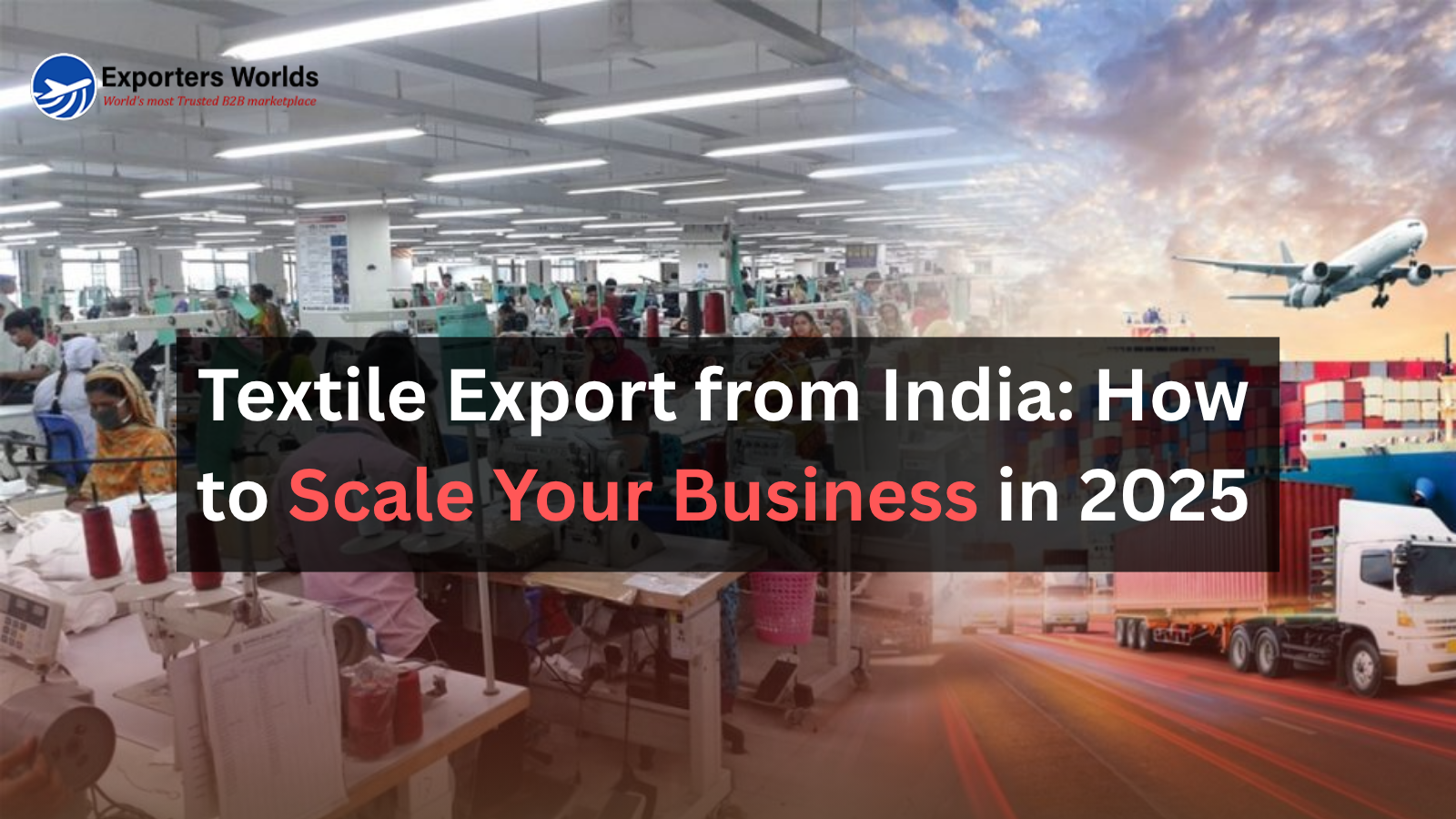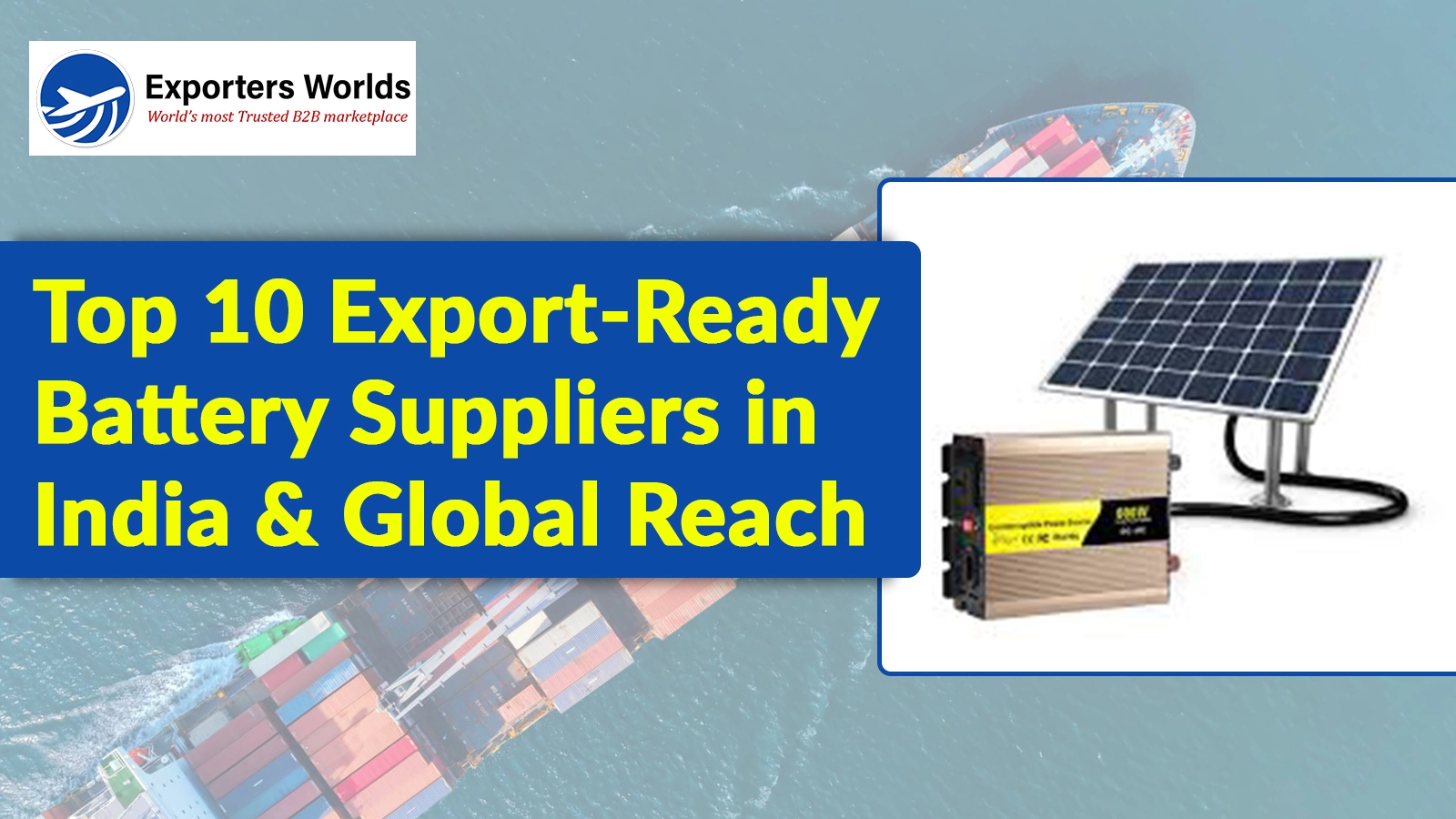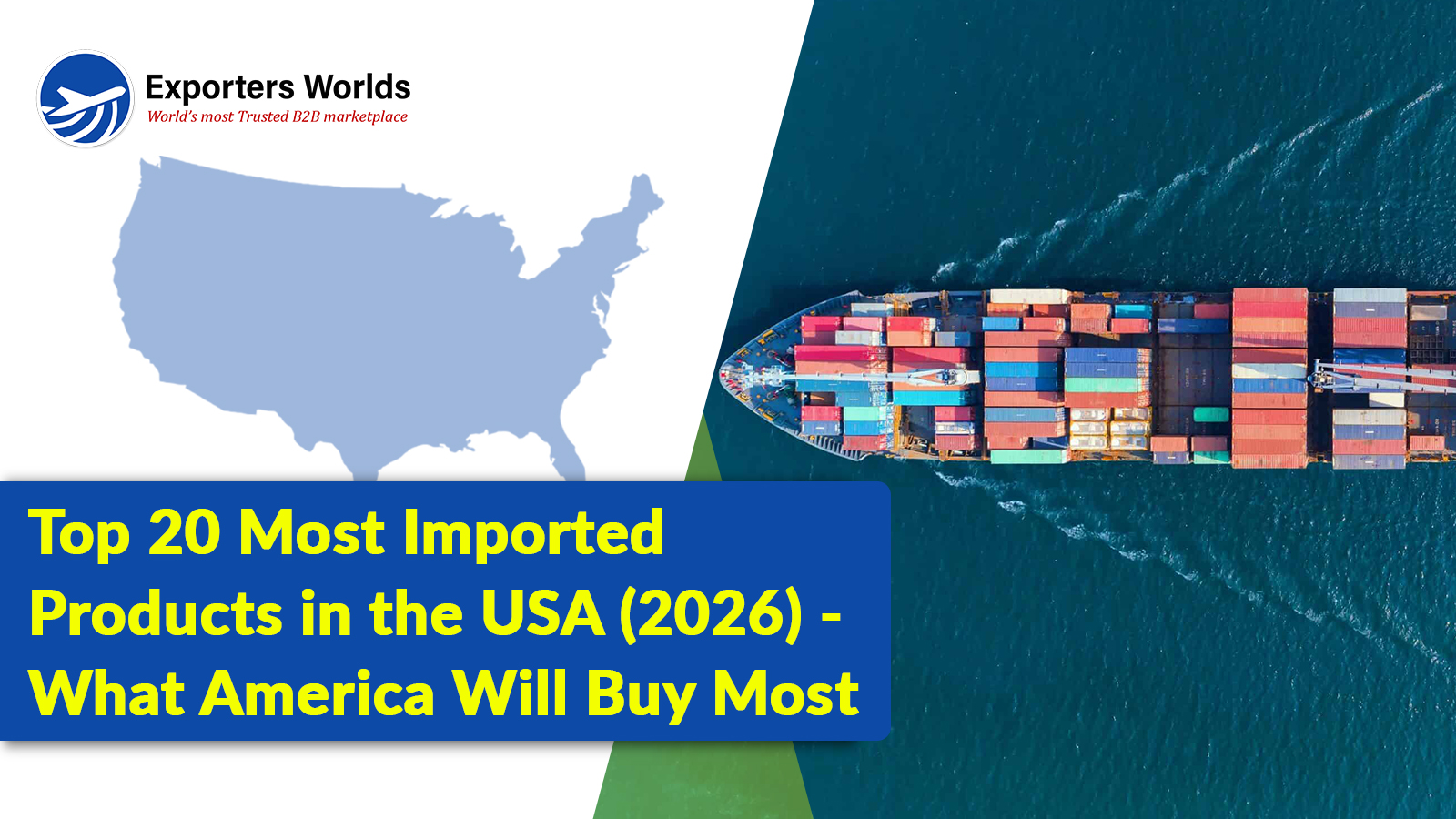Textile Export from India How to Scale Your Business in 2025

1. Introduction: A Fabric of Opportunity
Textiles in India... they’re more than a product line. They’re legacy, livelihood, artistry—stitched across centuries. And today, as the global supply chains buckle and reform, textile export from India stands at a rare inflection point.
Not symbolic. Not gradual. But a full-throttle leap.
The industry has already touched $44.5 billion in exports last year, with the USA alone pulling in a significant chunk. But here’s the thing—2025 won’t reward the conventional exporter. This is the year of smart scaling, digital adoption, faster lead times, smarter financing, niche segmentation.
This isn’t about keeping up anymore. It’s about getting ahead before someone else does.
2. Market Snapshot: Textile Export from India
Let’s look at the big picture first.
India is currently the second-largest exporter of textiles and apparel in the world, behind only China. Nearly 12% of India’s total exports come from this sector. That’s not just economic—it’s strategic.
And yes, the textile export from India to USA is a story in itself. Over $8.8 billion worth of Indian textiles were shipped to American ports last year alone.
What's driving that?
Buyers in the U.S. are actively seeking alternatives to China. They’re looking for suppliers who can deliver quick, compliant, sustainable. India checks most of those boxes.
Across categories:
-
Garments: Cotton-based T-shirts, woven shirts, trousers—still king.
-
Home textiles: Bedsheets, bath linen, curtains—they're booming.
-
Technical textiles: Low volume, but high-value—and rising.
-
Organic, eco-certified SKUs: No longer optional. They're requested upfront.
The point? Demand isn’t the problem anymore. Supply chain readiness is.
3. Understanding the Export Landscape
The terrain’s shifting—and fast.
With the Foreign Trade Policy update in 2023 extended till 2025, the emphasis is now on:
-
Faster port clearances
-
Digital processing of shipping bills
-
And streamlined RoDTEP reimbursements—which, frankly, matter when you’re competing globally.
Plus, the PLI scheme for textiles, especially MMF-based products and technical textiles, is drawing serious investments. If you’re in knits, synthetics, industrial fabrics—2025 might just be your breakout year.
But don’t underestimate compliance.
If you’re exporting to the USA:
-
You need CPSIA (for children’s wear)
-
FTC textile labeling rules
-
Country of Origin certifications
For Europe?
REACH. GOTS. OEKO-TEX. It’s not as scary as it sounds. But yes, non-compliance will kill credibility.
Bottom line—compliance isn’t red tape anymore. It’s your passport.
4. Opportunities in B2B Wholesale Clothing from India
Let’s talk B2B. The quiet goldmine.
You don’t need a retail brand. You don’t need to be known on Instagram. If you’re selling solid MOQ-based collections to boutiques, independent labels, institutional buyers—you’re in the game.
And right now? That game’s exploding.
International buyers, especially in Europe and North America, are increasingly ditching long lead Chinese vendors for more agile B2B wholesale clothing India suppliers.
Why?
-
Greater price stability in cotton
-
MOQ flexibility
-
Ease of communication
-
And... the perceived sincerity of Indian exporters. That matters.
Now, here's where it gets real. Digital B2B platforms are leveling the playing field. These aren’t classifieds. They’re ecosystems—offering verified leads, product pages, analytics, buyer behavior insights.
The ones who win?
-
Answer queries fast
-
Price transparently
-
Upload professional catalogs
-
Maintain consistent dispatch timelines
A Surat-based hoodie supplier, just last quarter, jumped from 8 buyers to 47, simply by optimizing product descriptions and committing to a 5-day dispatch promise. No ad spend. Just platform leverage.
5. How to Scale Your Textile Export Business in 2025
a. Digital Transformation
Still emailing PDFs and chasing WhatsApp approvals?
Your buyer moved on.
You need a full-stack e-commerce export presence. Cataloged SKUs. Filtered sizes. Pricing brackets. Live MOQ adjustments. Basic stuff.
Even something as simple as a Shopify-based landing page with embedded inquiry forms can increase lead conversions by 22–28%.
Behind the scenes, plug in ERP tools, CRMs, maybe even basic inventory automation. The less friction you create for the buyer, the faster they move.
b. Global Market Positioning
Here’s a fact—buyers want to believe in your story. If you’re just another woven shirt supplier with no identity, you’ll get passed over.
Position yourself. Tell them why your cotton is better. What your finishing process looks like. Why your family’s been in this business since 1983. Build a narrative.
Trade shows? Yes. But virtual booths, too. These are where the quiet six-figure leads come from.
c. Supply Chain Optimization
If your lead time is 30 days and your competitor does it in 17—guess what? You’re out.
Invest upstream. Diversify yarn sourcing. Strengthen dyeing partnerships. Build fast, modular packaging units.
Oh, and by the way—sustainability isn’t a trend anymore. It’s buyer policy. If your process is clean, say it. Document it. Push it in your catalog.
d. Financing and Risk Management
You’re exporting 3 containers a month now. Scaling to 8? Don’t self-finance.
Use EXIM Bank’s pre-shipment finance, explore ECGC’s credit insurance, and hedge currency if 60% of your business is USD-linked.
One INR slip per USD can cost you lakhs per quarter. Manage it.
6. Exporting to the USA: What You Need to Know
The United States is still the #1 destination for textile export from India to USA, and rightly so.
But it’s layered. Competitive. And unforgiving if you’re unprepared.
Top-selling products in 2024:
-
Knit T-shirts (especially cotton blends)
-
Loungewear and athleisure (comfort-first fashion)
-
Babywear (eco-certified)
-
Home textiles (anti-microbial, hypoallergenic fabric)
Labeling laws? Brutal.
-
Every fiber content must be declared accurately.
-
Made in India tag? Non-negotiable.
-
Packaging must meet flammability and safety standards—especially in kidswear.
If you’re in, you’re in for good. But one shipment returned at customs? It sticks to your record.
Tariffs are tricky. Use the HTS codes smartly. Work with freight agents who’ve handled textile cargo before.
7. Top 10 Garment Export Companies in India (2025 Update)
This is who the world’s watching:
-
Shahi Exports – 100,000+ workers. Capacity monster.
-
Gokaldas Exports – Performance wear genius.
-
Arvind Ltd. – India’s denim pioneer. Heavy on innovation.
-
KPR Mill – Knits and more.
-
Pearl Global – Fashion-driven exports.
-
Eastman Exports – Long-time heavyweight in Tirupur.
-
Richa Global – Trend-responsive manufacturing.
-
Orient Craft – ESG-focused and legacy-rich.
-
Loyal Group – Cotton, cotton, cotton.
-
Cotton Blossom India – Organic exports done right.
What unites them?
Process. People. Positioning. Every one of them can deliver scale and story.
8. Challenges to Watch Out For
This isn’t a fairy tale. 2025 has its hurdles.
-
Cotton yarn prices have been swinging 12–18% quarterly. That’s margin chaos.
-
New labor laws in Tamil Nadu and Karnataka may slow down mid-tier units.
-
Trade dynamics? China-Taiwan tension, EU Green Deal policies, the US shifting GSP terms—none of it’s small.
-
And the ESG wave is real. Buyers want transparent water usage reports, traceability tools, even audit-ready dyeing partners.
But hey. These are friction points, not dead-ends.
9. Conclusion: The Future Wears Indian Fabric
This isn’t 2005. The buyer isn’t waiting.
Textile export from India is entering a phase where those who scale digitally, comply cleanly, and brand wisely will win consistently.
You don’t need massive investment. You need sharper clarity.
-
Know who you’re selling to.
-
Show up where they search.
-
Build what they want before they ask.
-
Deliver better than they expect.
And while you do that, surround yourself with partners who get it. Platforms that don’t just promise leads—but help you structure, negotiate, and convert.
Exporters Worlds is one of them. Quietly enabling thousands of Indian exporters to make that leap—without making noise about it.
FAQs: Fast Facts for Textile Exporters in 2025
1. What is the current scope of textile export from India?
Right now? It’s massive. India is the second-largest textile exporter globally, and the industry contributes nearly 12% to total export earnings. By the end of 2025, India is expected to touch or even exceed USD 50 billion in textile and apparel exports. From traditional garments to technical fabrics, India is shipping to over 150 countries—and that list is growing.
2. How can small businesses start exporting textiles?
Surprisingly, it’s not that complicated. You’ll need to:
-
Register with DGFT and get an IEC (Import Export Code)
-
Set up a compliant business structure (GST, bank accounts, etc.)
-
Get listed on trusted B2B wholesale clothing India platforms
-
Identify products, MOQ, and pricing
-
And start small—maybe through merchant exporters or digital leads
No warehouses needed. No large capital. Just strong documentation, consistent supply, and the willingness to respond fast.
3. Which country is the biggest importer of Indian textiles?
The United States. No contest there. It accounted for nearly $8.8 billion worth of imports from India last year. Europe is strong too—especially Germany, UK, France, and the Netherlands. UAE and Bangladesh are also significant hubs, especially for re-exported Indian goods.
4. What is the best B2B platform for clothing export from India?
There are many out there—but if you're serious about scaling, look for one that offers more than just listing space. You need verified buyers, catalog optimization support, analytics, and trade tools.
Exporters Worlds has been quietly enabling serious exporters with exactly that—built for Indian suppliers, with a sharp focus on international textile sourcing.




